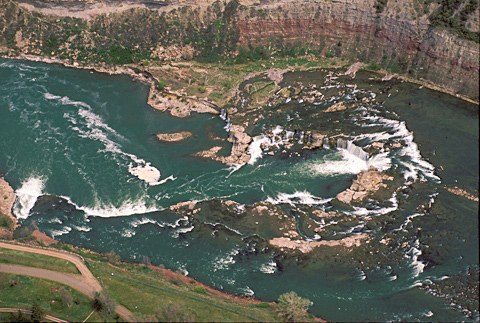Friday, 14 June 1805, began placidly beneath a clear sky, the temperature a balmy sixty degrees. At about 10 a.m. Lewis began a solitary walk to check out the rapids above the falls, which he had noticed the day before. After five miles, passing “one continued rappid and three small cascades of abut for or five feet each,” he “arrived at a fall of about 19 feet,” which he suitably named “the crooked falls” and proceeded to describe its geometry.
Upon reaching the Great Falls, Lewis had still been reasonably confident that the expedition was facing a one-day portage, but during the course of this day he discovered with growing astonishment four more waterfalls and a succession of rapids. It was well after dark before he rejoined his companions at camp. “They had,” he wrote, “formed a thousand conjectures, all of which equally forboding my death, which they had so far settled among them, that they had already agreed on the rout which each should take in the morning to surch for me.”
The following week, Clark spent three days surveying the river from the mouth of Portage Creek to White Bear Islands. He measured each of the five major falls and seventeen separate rapids, cataracts, and pitches, calculating that the river “experience[d] a decent of 360 feet 2 inches and ¾” in a distance of 15 miles.
For another perspective, see Crooked Falls in The Great Falls.
From Discovering Lewis & Clark from the Air
Photography by Jim Wark
Text by Joseph Mussulman
Reproduced by permission of Mountain Press

